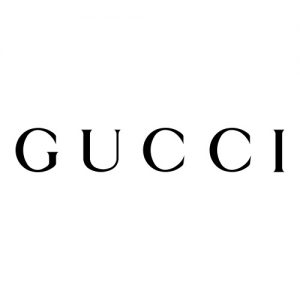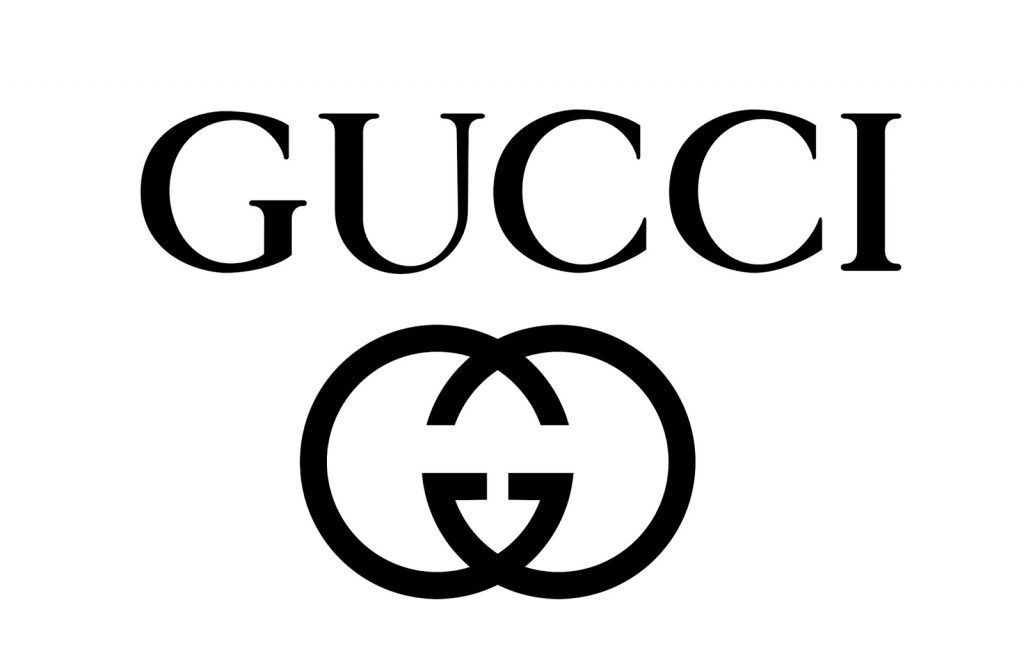Contents
Summary
Founded in Florence, Italy in 1921 Gucci is one of the world’s leading luxury brands. Following the House’s centenary, Gucci is forging ahead in the luxury industry and celebrating Italian craftsmanship, contemporary design and creativity. As part of the global luxury group Kering, Gucci is one the most renowned and influential luxury brands in the world today.
In 2017- in keeping with Kering’s commitment to responsible business practices- Gucci unveiled “Culture of Purpose”: a ten-year sustainability plan that focuses on creating a positive environmental and social impact which is outlined in the Gucci Equilibrium platform. More recently in January 2023 Gucci announced the arrival of Sabato De Sarno as Creative Director who has taken over the reins of designing and presenting all collections.
History
The house of Gucci took shape back in 1921 in Florence. Founder Guccio Gucci moved to London where he found work as a luggage porter at Savoy Hotel. It was here he gained a deep understanding of what the A-list set looked for in luxury goods and met his future consumers. When returning home to Florence he learnt leather craftsmanship at Franz and with the support of his wife used their savings and a loan to open the first Gucci store in Florence.
The focus was on leather goods. Initially working on saddlery.. the era of horse-drawn carts quickly gave way to cars.. with a new focus on luggage and travel accessories. As Gucci developed into a family business with Guccio’s three sons- Aldo, Vasco and Rodolfo- the luxury brand enjoyed unprecedented success. However it faced material constraints from the League of Nations embargo against Italy and leather was in short supply. Notwithstanding- the brand continued to grow throughout the Thirties with its products handcrafted with woven canapa and hemp. And bags featured the signature print of the house- the series of small interconnecting diamonds in dark brown on a tan background.
In 1938 a new store opened in Rome. it was a new era for Gucci. After World War II traditional materials were difficult to source so the brand began using bamboo for the handle of its new bag: 1947 Gucci Bamboo. It was inspired by the shape of a saddle referencing the brand’s equestrian roots. The Fifties witnessed the house expanding into the United States of America.
Guccio Gucci passed away in 1953 leaving his business in the hands of his three sons. In 1955 the brand launched the iconic Gucci Horsebit Bag. In 1961 former first lady of the United States Jacqueline Kennedy was spotted holding the G1907 Gucci Bag which the house then renamed “The Jackie”. That era witnessed the brand expanding to London and Palm Beach. And the first Gucci logo- the double G- was created as a clasp to fasten bags. The brand then opened its first store in Parisin 1963 and the Flora scarf was made in 1966 for Princess Grace Kelly of Monaco.
Gucci began opening stores worldwide ranging from Tokyo to Hong Kong. In 1975 luxury brand diversified into beauty with the first fragrance: No 1. The Seventies also witnessed the marriage of Maurizio- son of Rodolfo- and Patrizia Reggiani. With the third generation now heavily involved in the business.. family feuds began forming and in particular with respect to this relationship.
Vasco Gucci passed away in 1974 leaving the business to his two brothers: Aldo and Rodolfo. Gucci held its first ready-to-wear show in 1981 in Florence. The Eighties led to changes within the fashion house as the family feud only grew as a tussle for control. When Rodolfo passed away in 1983 he left his share to his son Maurizio who in time took over the fashion house. As the company grew everyone wanted the seat of power. Aldo became Chairman of the board emeritus while Maurizio was Chairman of Gucci Shops Inc. – the American arm of the business- and Aldo’s sons become vice chairmen.
However Maurizio brought his fair share of scandals to the business including tax evasion and a majority of shares of Gucci was acquired by Investcorp. Saving the fashion house from bankruptcy Bergdorf Goodman’s President Dawn Mello and Head of Accessories Richard Lambertson were brought in to give the brand a new lease of life.
1990 witnessed the death of Aldo Gucci leaving the business in the hands of Guccio’s grandchildren. The same year brought the appointment of Tom Ford as head of womenswear. Three years later the family-owned empire was left in the hands of outsiders. Maurizio Gucci transferred all his shares to Investcorp.. ending the family’s involvement in the luxury brand.
In 1994 Tom Ford was oappointed creative director of Gucci. His first collection for Fall 1995 put Gucci back on the fashion map with glamour at the core of the collection. Ford is credited with re-instating the name and brand image of Gucci well into the Nineties. However the brand was not free from scandal: Maurizio Gucci was murdered in March 1995 and three years later his ex-wife Patrizia Reggiani was sentenced for organising the assassination!
The late Nineties witnessed the battle of LVMH and PPR -now known as Kering- who wanted the fashion house. LVMH began purchasing shares of Gucci but before the company could take over.. PPR quickly became the major stakeholder. And Tom Ford left due to issues with PPR in 2004. He was succeeded by Giannini in 2006. When Giannini left in 2014 Alessandro Michele was announced as the new creative director of Gucci. On 23 November 2022 Michele left Gucci after seven years and iin January 2023 Gucci announced Sabato De Sarno as Creative Director.
Vision
Gucci’s vision is to redefine the boundaries of luxury fashion by seamlessly integrating its rich heritage with cutting-edge contemporary design and web3 technology. The luxury fashion brand aspires to be at the forefront of fashion innovation, consistently setting new standards in both style and sustainability. By embracing a creative, forward-thinking approach, Gucci aims to inspire a global audience with its bold design aesthetic, which injects classic Italian craftsmanship with an avant-garde vibe. This vision underscores Gucci’s commitment to pushing the limits of conventional fashion and creating unique, statement-making pieces that resonate with modern sensibilities.
At the core of Gucci’s vision is a dedication to sustainability and ethical practices, reflecting a broader commitment to environmental and social responsibility. The luxury fashion brand is focused on fostering positive change within the fashion industry by implementing eco-friendly practices and supporting initiatives that promote ethical production. Gucci’s forward-looking approach encompasses a dynamic fusion of tradition and innovation, ensuring that it not only leads in design excellence but also champions a more sustainable and conscious future for luxury fashion. Through this dual focus on creativity and responsibility, Gucci aims to shape the future of fashion while remaining deeply connected to its legacy and values.
Mission Statement
Gucci’s mission is to blend its illustrious heritage with Italian craftsmanship and modern design to create distinctive and elegant looks for today’s discerning consumers. Since its founding in 1921, Gucci has pushed the boundaries of innovation while staying true to its roots. The luxury fashion brand’s commitment to merging traditional techniques with avant-garde aesthetics allows it to maintain a timeless appeal, captivating those who value both opulence and individuality.
By harmonizing classic elegance with contemporary flair, Gucci ensures its designs stand out in the fashion world. The iconic double-G logo, along with its bold use of colors and patterns, represents the luxury brand’s dedication to striking a perfect balance between heritage and modernity. This approach not only reinforces Gucci’s position as a leading luxury brand but also underscores its role as a trailblazer in luxury fashion, continually inspiring and elevating the style of its global clientele.
Key Team
- Marco Bizzarri (CEO)
- Charlotte Sprintis (Vice President of Public Relations)
- Nicole Marra (Vice President, General Counsel, Corporate Affairs)
- François-Henri Pinault (Chairman and CEO : Kering)
- Sabato De Sarno (Creative Director)
Products and Services
Kering-owned luxury brand Gucci draws on its rich history, Italian craftsmanship and contemporary design to create distinct looks for an elegant modern consumer. Gucci holds a significant share of the luxury fashion market and is ranked fourth in the world by Interbrand, behind Louis Vuitton, Chanel and Hermès. The luxury brand’s collections of ready to wear, accessories, footwear, jewellery, watches and fragrance has helped it maintain a competitive edge.
Per Kering: ‘In the first half of 2024, Gucci’s revenue was €4.1 billion… Gucci’s new offering, rolled out in stores in line with plans, is well received.’ Gucci Fall Winter 2024 campaign showcases how rich wool coats are worn with delicately embroidered slip dresses and earthy tones are highlighted by bursts of color. Accessories continue to explore the maiso’s heritage-inspired narrative. Taking center stage in the campaign is the new Gucci B bag, first seen in an artisan’s notebook in the 1950s. Gucci Jackie, in new colors, also explores this nostalgic, archival theme. Much like the luxury brand’s archival tennis collection.
Recognition and Awards
Gucci is widely recognized as a trailblazer in the luxury fashion industry, celebrated for its exceptional Italian craftsmanship, innovative designs, and cultural relevance. Established in 1921 by Guccio Gucci in Florence, the brand’s early success stemmed from its high-quality leather goods, crafted to perfection with an eye for detail. Over time, Gucci became synonymous with luxury through its signature elements, such as the iconic double-G logo and the green-red-green web stripe, which remain enduring symbols of elegance and sophistication. The brand’s ability to blend traditional artistry with modern innovation has positioned it as a global leader in luxury fashion.
In addition to its timeless designs, Gucci is recognized for its ability to influence and shape contemporary fashion trends. Under the leadership of visionary creative directors like Tom Ford, Alessandro Michele, and Sabato De Sarno, the brand has continually reinvented itself while maintaining its rich heritage. Gucci’s bold and often avant-garde creations have captured the imagination of celebrities, fashion enthusiasts, and collectors worldwide, solidifying its status as a cultural icon. From its classic Bamboo bags to the provocative runway collections, Gucci’s commitment to pushing boundaries ensures it remains at the forefront of the fashion world, appealing to new generations while preserving its legacy.
During his tenure as Creative Director for Gucci, Tom Ford won a plethora of awards, including VH1-Vogue Best New Designer (1995) Designer of the Year (1996) CFDA International Designer of the Year (1996) Elle Style Awards’ Style Icon Award (2000) British GQ International Man of the Year (2000) Time Best Fashion Designer (2001) and GQ Designer of the Year (2001). Alessandro Michele has also been decorated throughout his tenure winning the International Designer Award from the British Fashion Council in his first year at the house (2015) as well as the Trailblazer Award in 2021 — one of the British Fashion Council’s Special Recognition Awards.
References
- Official website Gucci
- Kering Kering
- Brand history of Gucci Kering
- Gucci names De Sarno Creative Director Reuters
- LinkedIn account of Gucci LinkedIn
- Alessandro Michele is stepping down as creative director NPR
- House of Gucci WWD
- Can Lightning Strike Thrice at Gucci? BoF
- Instagram account of Gucci Instagram
- Alexander McQueen and Gucci Group appoint Sarah Burton Creative Director Gucci
- History of Gucci Instyle
- Corporate information Gucci
- Facebook account of Gucci Facebook
- Why PPR changed its name to Kering BoF
- History of Gucci GlamObservor
- Gucci announces new Tom Ford rooms at the Gucci Museo aeworld
- Twitter account of Gucci Twitter
- Gucci company thrives as a family affair CS Monitor
- Wikipedia page of Gucci Wikipedia
- Gucci opens a museum in Florence NYTimes





